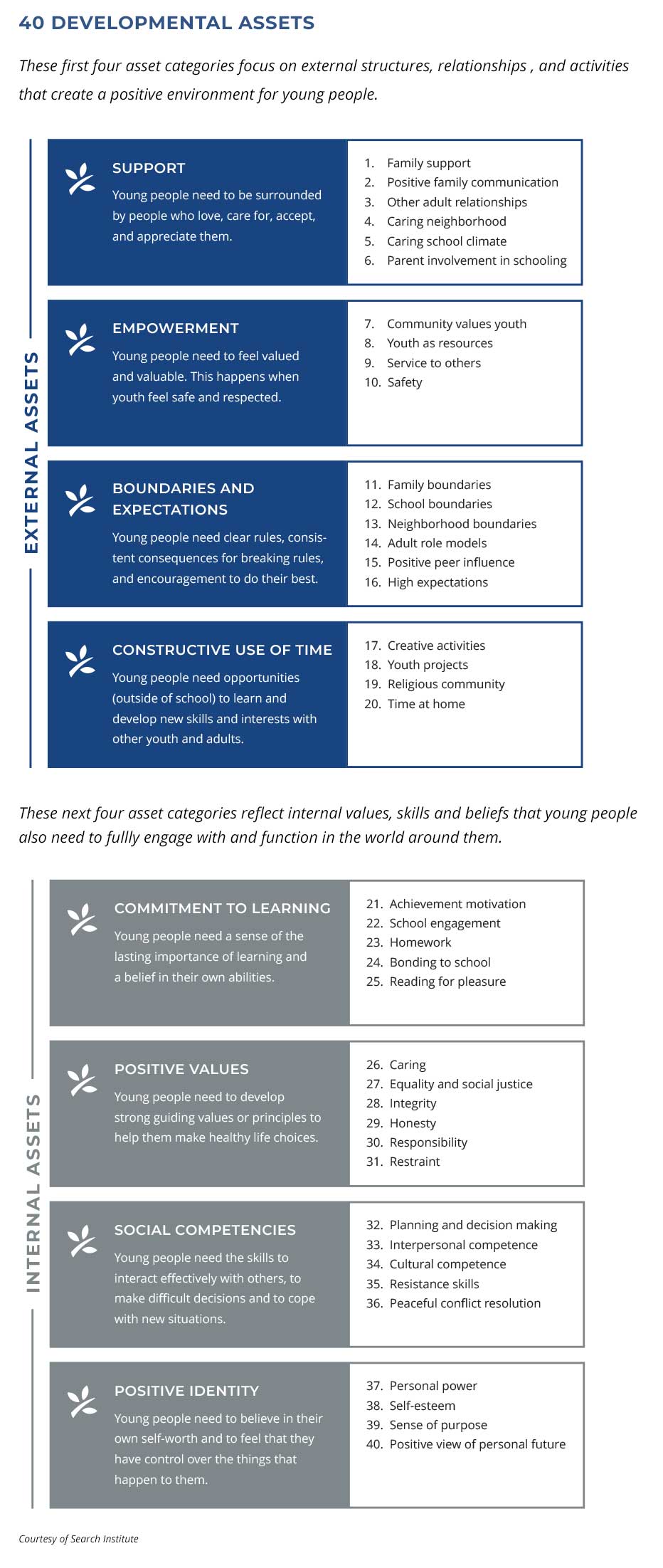No two journeys through Gateway are the same. But always, the compass points towards connection, confidence, and health.

Enhancing Developmental Assets
Every youth enters Gateway with their own unique experiences, background, and beliefs. Thus, their experience is marked by two guideposts: the individual they are now; and the individual they are capable of becoming.
Putting Assets in Place
We begin by taking an in-depth assessment of the assets, talents, and strengths a youth has already. By tapping into their natural assets, and building upon them, Gateway assists each individual to develop other essential competencies such as resilience, social facility, and belief in the future.
These are the developmental assets that help teens sustain positive attitudes and protect them from making unhealthy choices or engaging in negative and risky behaviors.
 For more about the research supporting these 40 developmental assets, we invite you to visit the Search Institute, a leading innovator in discovering what children and adolescents need to succeed in their families, schools, and communities.
For more about the research supporting these 40 developmental assets, we invite you to visit the Search Institute, a leading innovator in discovering what children and adolescents need to succeed in their families, schools, and communities.
Community Connection
Gateway is purposely located in an urban community to ensure our youth have access to opportunities to develop their external assets. Through participation in community-based activities and service our teens learn how to connect, access resources, and contribute to the community they live in. As a result, each youth develops skills they can take home to their own neighborhood to establish value and connection.
Mile-Markers : A Phased Approach
Young people move through the Gateway program phases at their own pace. As they progress through each phase, they develop insight into self-defeating patterns, learn to overcome maladaptive thoughts and behaviors, and develop enhanced feelings of self worth, purpose and connection.
Each phase includes concrete tasks, responsibilities, and challenges that a youth must address in order to advance. Thus, all youth, their families, educational consultants, and treatment team members have a common language with which to communicate about treatment goals and progress.
Some of these tasks are fundamental to every student, regardless of their level of functioning or diagnosis. Others are more specific and individualized, taking into account each student's starting place upon admission as well as their fundamental capabilities.
"Phase advancement" is not the actual goal. Rather, taking a phased approach serves to supply the student and the treatment team with a way to divide up treatment objectives into smaller, more manageable parts.
Instead of feeling overwhelmed by the entirety of treatment in front of them, students can focus on what they can do each day towards the achievement of their goal of phase advancement. Each phase brings with it certain privileges that are meaningful to each student, helping to motivate them through challenging times.
-2.jpeg)